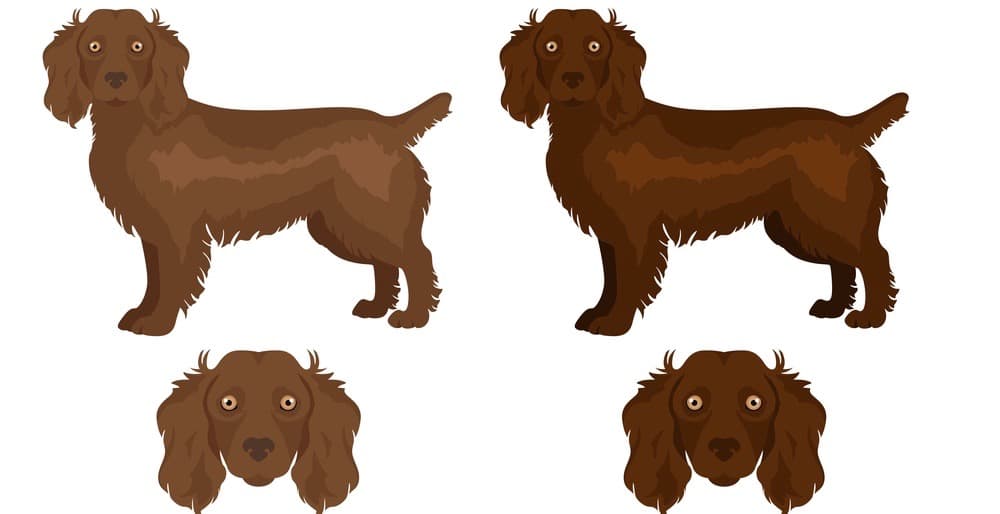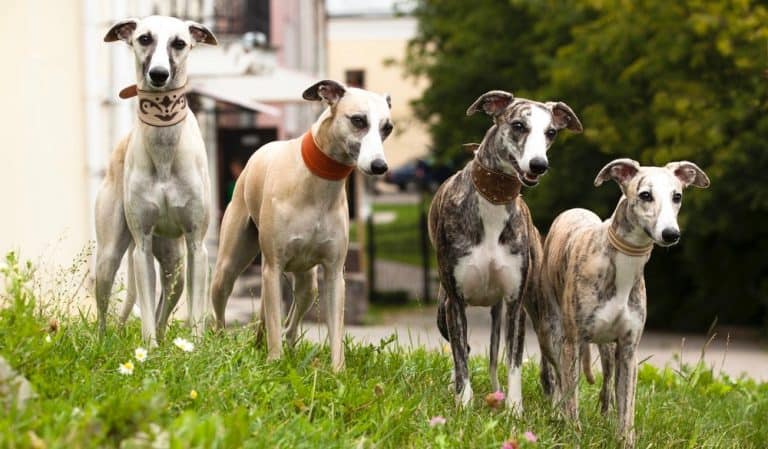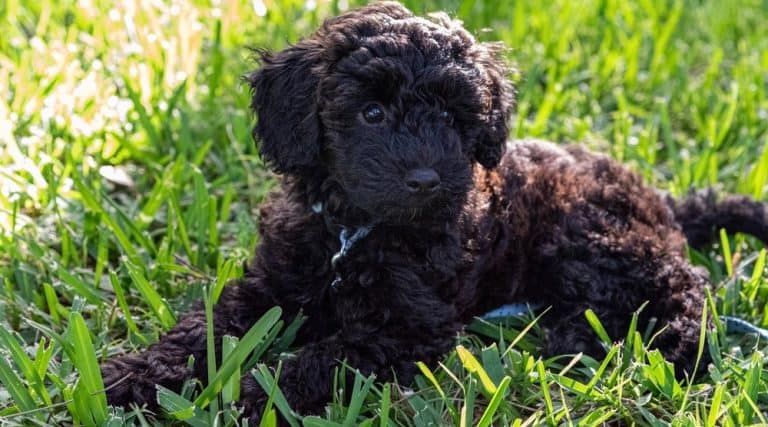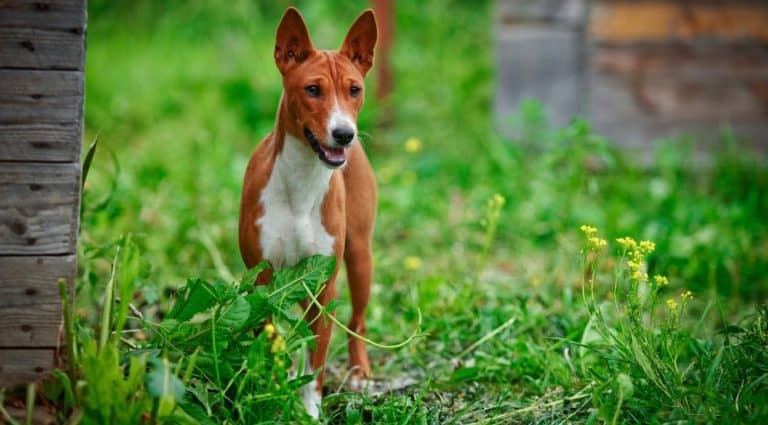Boykin Spaniel Growth Chart – Size & Weight Chart
Boykin Spaniel is an enthusiastic and energetic medium-sized dog breed known for being the official dog breed of South Carolina and for its love of water and retrieving.
Growing in popularity, more owners are curious to know the Boykin Spaniel growth chart.
As an owner of a Boykin Spaniel, knowing the expected growth stages of your dog is important to ensure they are on track and that any abnormalities can be checked at the earliest possible stage.
This article gives all the essential information you need to know about the Boykin Spaniel growth chart, discussing expected weight and height growth stages from birth to adulthood.
When Is A Boykin Spaniel Fully Grown?

As the Boykin Spaniel is a medium-sized breed it takes less time to reach full maturity compared to larger breeds.
Typically, a Boykin Spaniel reaches adulthood between 14 to 16 months of age.
They reach full bone growth around 7 to 8 months. At this stage, a Boykin Spaniel will reach their maximum height growth.
However, during adolescence they bulk out through building muscle mass and fat, reaching their maximum weight at adulthood at 14 to 16 months.
Boykin Spaniel’s reach sexual maturity at 8 to 9 months and full adult mental maturity at 15 months.
Boykin Spaniel Weight Chart
You should always carefully monitor the Boykin Spaniel weight chart as your puppy grows to ensure they are on track. Especially as many factors cause a Boykin Spaniel to gain or lose weight as they develop.
For example, correct foods and portion control. Overfeeding can be easily done and cause significant weight gain, particularly if your pooch is receiving poor-quality food.
Although household budgets can sometimes not stretch to premium-range quality dog foods, your Boykin Spaniel must be fed with the best quality foods from reputable manufacturers to support healthy growth and weight.
When they reach full maturity between 14 to 16 months of age, male Boykin Spaniel’s weigh 30 to 40 pounds, while females are expected to weigh 25 to 35 pounds.
Although they will be at the maximum height during adolescence, the transition to adulthood brings in gains in muscle and fat which causes weight gain.
If the adult weight is beyond these ranges, do consult a vet for a check-up or advice on healthy behaviors.
Boykin Spaniel Puppy Weight Chart
| Male | Female | |
|---|---|---|
| Weight (lbs) | 30 - 40 lbs | 25 - 35 lbs |
| Weight (kg) | 13.5 - 18 kg | 11.5 - 16 kg |
| Height | 15.5 - 18 inch | 14 - 16.5 inch |
Boykin Spaniel Growth Chart – What To Expect
The section below outlines what to expect from each key growth stage for Boykin Spaniel’s to provide you with an overview of expectations.
Birth – 2 Weeks
During the first 2 weeks of life, a Boykin Spaniel, like all dogs are completely dependent on its mother through natural feeding.
Sometimes, the mother may struggle to produce enough milk. In this instance, they should be fed formula milk to ensure they received the required nutrients for early growth.
When they are born, Boykin Spaniel puppies cannot see, but by week two 2 weeks their eyes and ears will open, and they’ll start taking in their surroundings.
3 Weeks – 12 Weeks
At this stage, Boykin Spaniel puppies start to become more independent and curious. At 8 weeks, a puppy can be separated from its mother and adopted by an owner for house training.
At 8 weeks they can be introduced to solid foods but be careful to not rush this and ensure there is an integration process.
By 12 weeks, Boykin Spaniel puppies should be vaccinated and de-wormed and start exercising. They should be very sociable.
4 Months – 9 Months
Around 5 months, the adolescent stage begins. Clear signs of adolescence include the growth of the adult coat and increased independence and maturity in terms of their behavior.
During this growth stage, good house training is required to instill good habits and routines for your Boykin Spaniel puppy.
Particularly given their adventurous nature, expect increasing signs of disobedience and cheekiness, but these traits can be handled during training so they can be removed before transitioning to adulthood.
By 8-9 months, Boykin Spaniels are sexually mature meaning higher levels of testosterone for males and estrogen for females. This will provoke behavior change during adolescence.
10 Months – 18 Months
A Boykin Spaniel reaches adult maturity from 14 to 16 months. Transitioning out of adolescence, your dog should be well-trained and ready to tackle adulthood.
From 10 months, you can start to introduce adult exercise regimes to ensure good routines are instilled from an early age. The same applies to food.
From 10 months you can start introducing adult dog food so that your dog can appropriate levels of vitamins and nutrients to sustain the energy levels and metabolism of an adult Boykin Spaniel.
Adult
Adult Boykin Spaniels are highly energetic curious dogs and will be a lot of fun to handle. However, to ensure they live fulfilling lives, you should be aware of the fairly intensive exercise needs required.
Historically known as hunting companions, you should keep your adult Boykin Spaniel stimulated through regular jogs or walks so they can stretch their legs.
Throughout adulthood, you must regularly monitor their weight and height to ensure they are healthy and live a fulfilling life.
How Big Do Boykin Spaniels Get?
Predicting the adult size of your Boykin Spaniel can be achieved in a couple of ways including looking at the parent’s size, doing a DNA test, and looking at the paw size.
The size of the parents is the best indicator of how big your Boykin Spaniel puppy will get.
When you pick up your dog from the breeder, ask them to provide information on the weight and height of the parents and previous litters, if known.
If you do not have access to the information about the size of the parents, you can purchase a DNA test.
This test can track your dog’s ancestry back three generations and help you predict its size.
Another really easy way of predicting adult size is looking at the paw size. Review the paw size concerning the legs and body.
If the paws appear larger in proportion to the legs and body, you can expect further growth for your dog until they reach their final adult size.
Will Neutering/Spaying My Boykin Spaniel Affect His Growth?
Neutering or spaying your Boykin Spaniel is highly recommended. Neutering refers to the removal of a male’s testicles while spaying removes the ovaries and the uterus from a female.
Provided the neutering/spaying is conducted during adolescence, it is not known to affect physical growth. But if it is done too early, it may affect bone and muscle growth.
Most vets recommend doing the process between four and nine months for a Boykin Spaniel.
For males, it’s recommended this takes place once they’ve reached puberty, while for females it should be after they’ve reached their first heat.
As Boykin Spaniels are former hunting dogs, neutering and spaying reduce levels of reduces aggressive behaviors, while also reducing the chances of cancers known to be caused by reproductive organs.
Boykin Spaniel Height Chart
Monitoring the height of your Boykin Spaniel is useful because it ensures you can purchase equipment to fit the size of your dog.
For example, kennels, cribs, and harnesses all fit best once you know the size. It also allows you to monitor the healthy growth of your dog.
To measure the height of your Boykin Spaniel simply make them stand straight on a flat surface. Next, use a measuring tape and measure from the ground to the withers to get the full height.
On average, a male Boykin Spaniel have a height of 15 to 18 inches at adulthood. A female Boykin Spaniel should have a maximum height of around 14 to 16.5 inches.
Cocker Spaniel vs. Boykin Spaniel Size
Boykin spaniel is a little larger than Cocker Spaniel. The males stand at about 15.5 to 17 inches tall and weigh between 30 to 40 pounds when fully grown.
Females stand at about 14 to 16.5 inches at their shoulders and weigh between 25 to 35 pounds.
Cocker spaniels are beautiful and moderately sized dogs. The males stand at 15 inches tall while females stand at 14 inches.
They both weigh about 24 to 28 pounds. Females are just a little smaller than males. They should not weigh beyond 30 pounds and need help to prevent overeating.
Factors That Affect Boykin Spaniel Growth
Genetics And Gender
Genetics is a key role in the growth and development of a Boykin Spaniel. Female Boykin Spaniels are smaller and weigh less than males.
Genetics will help you understand the size that your puppy will grow to. You will also understand the underlying health conditions that your dog can get.
It is good to be well conversant with parent breed history before you consider adopting your puppy.
Nutrition
Boykin Spaniel is known for piling on weight. Therefore, a diet that is biologically appropriate with proteins, healthy fats, vegetables, ground bone, vitamins, and minerals, is necessary for maximum performance and health.
High-quality dog food is good for healthy growth and development. Providing your dog with the right food prevents them from becoming overweight or underweight. Provide the correct diet to your Boykin spaniel according to their age.
Physical Activity And Health
Boykin Spaniels are an energetic and athletic breed that require extensive exercise. Because of their nature as hunting companions, they need various exercises that stretch their legs and stimulate their mental and physical wellbeing.
One hour of daily exercise is recommended depending on their age.
Younger puppies should not participate in strenuous activities. Exercise them in a fenced environment to prevent them from chasing potential prey.
They can exercise in various situations and weather conditions. Exercise is good for them as it prevents them from being destructive or disobedient.
What If My Boykin Spaniel is Not the Right Weight?
Various health issues can occur if your Boykin Spaniel is not at the correct weight. Obesity, for example, can cause heart disease, breathing difficulties, and joint and back problems.
When you find your dog is not the right weight, work on the following activities for improvement:
Provide a healthy diet – This will help your dog to stay healthy and within the right weight. Provide high-quality dog meals to your Boykin Spaniel as guided by the veterinarian and you will achieve maximum growth and development.
Control your puppy’s food intake – Manage the quantity of your dog’s meal. Provide meal portions according to their ages as advised by your veterinarian. Have a proper meal schedule that will guide you when feeding your Boykin spaniel.
Prepare home-cooked meals – Home-cooked meals are good for your dog. Prepare your dog’s meal with quality ingredients suitable for their health.
Consult your vet on how to help your puppy have a healthy weight if there is no improvement in their weight.
Boykin Spaniel Genetics and Common Health Problems
The Boykin Spaniel is a very active dog, and this contributes to their good health. The breed has a life expectancy of about 10 to 12 years.
To get a healthy puppy, go through a reputable breeder who has a lot of references and check thoroughly on the paperwork.
This breed is susceptible to some genetic health conditions.
Some of the medical concerns that Boykin Spaniel is prone to include Hip and Elbow Dysplasia, heart diseases, eye problems, Thyroid disease, inherited degenerative Myelopathy, Cushing disease Exercise- Induced Collapse, Patella Luxation, and field accidents.
There is indeed a long list of conditions that can affect the Boykin Spaniel but there is no guarantee that your dog will have any of them.
Ensure to keep an eye on any problem to offer the best chance for a successful recovery if you encounter any disease with your dog. Proper management and treatment can ensure a full, and happy life for your dog.
Final Words
Hopefully, this article provides you with all the essential information you need to know about the Boykin Spaniel weight chart.
Knowing the recommended height, weight, and growth trajectories of your Boykin Spaniel is essential to support a healthy life.
Boykin Spaniel’s are highly energetic, curious dogs so you’ll certainly have your work cut out to keep up with them.
Always consult your vet if you ever spot notice any health issues. Even if it is a minor issue, it is always best to seek the reassurance of a professional.






